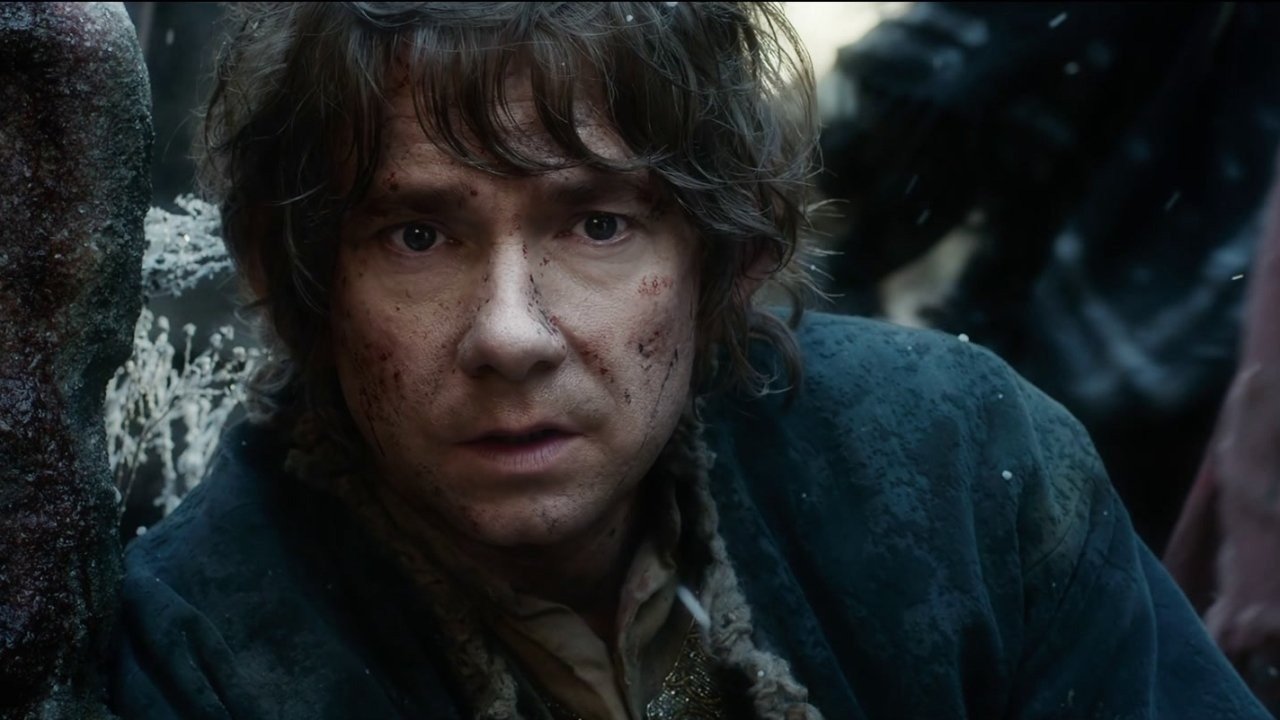7 Times The Hobbit Movies Needlessly Strayed From The Text
Image Source: Metacritic
There are several differences between The Hobbit movies and the original Tolkien books. Some changes were made to make the material work better on screen, but some were puzzling, to say the least. Let’s have a look at some of the strangest.
7. Casting A Young Bilbo
Image Source: You Tube
Tolkien clearly states that one of the central powers of the One Ring is that it slows aging. Gandalf remarks at the beginning of the Fellowship of the Ring novel how little his friend has changed since he last saw him. There are sixty years between the two films, and Ian Holm had been battling several health conditions and would not have been able to reprise his role. However, the drastic difference in the appearance of Ian Holm and Martin Freeman between movies squashes an essential aspect of the Ring’s power. They could have aged Freeman up to match The Lord of The Rings or cast a slightly older actor to avoid conflicting with the original material.
RELATED:
6. Sting’s Origin Story
Image Source: IGN
In the books, Bilbo finds Sting as part of a troll hoard. It feeds into his identity as the company’s burglar,’ whereas in the film, it was a gift from Gandalf. There was no need to deviate from the original text on this one, and no one is really sure why Peter Jackson changed it.
5. Azog ‘s Revenge Plot
Image Source: Wallpaper Flare
Tolkien’s albino orc did not survive his encounter with Dáin in the Battle of Azanulbizar or have a revenge plot (although his son does turn up in The Battle of The Five Armies). As a result, the films not only create a host of orc characters but switch out goblins for orcs in many confrontations. Adding extra villains fills the movies with gratuitous fight scenes that don’t match the message of the original book, which encourages readers to focus on brains over brawn.
4. The Escape From The Trolls
Image Source: You Tube
Tolkien writes the dwarves/Bilbo’s escape from the trolls very differently from how it is shown on screen. In the book, Gandalf imitates the trolls, so they argue and do not notice the rising sun. The movie swaps this Shakespearean technique for a stone smashing manoeuvre similar to the breaking the bridge of Khazad-dûm. But, once again, there was no need to deviate from the original story.
3. The Arkenstone
Image Source: You Tube
In the books, the Arkenstone (also known as The Heart of The Mountain) was an heirloom of the Kings of Durin’s Folk, but the films elevated it, giving the bearer the ability to summon the seven dwarven armies. The films also changed the look of the Arkenstone, and it appeared on screen more like a jewelled Similaril than the book’s opaline description. “It was a globe with a thousand facets; it shone like silver in the firelight, like water in the sun, like snow under the stars, like rain upon the Moon!’ There was no need for either of these changes. The Heart of The Mountain has enough gravitas without altering the original text.
2. The Creation Of Tauriel
Image Source: Rhiannon Thomas
Tauriel was brought into the movies to try and balance a large number of males in The Hobbit. She was created as a brand-new character, but the audience has no idea what happens to this very long-lived elf, which in theory, could have been around for The Lord of The Rings movies. There are plenty of women in Tolkien’s appendices that, like Galadriel, could have been in Mirkwood and added to the story. It could have given a greater sense of continuity to the franchise as a whole, rather than inventing someone new only for them to disappear again. It would have been better to replace Tauriel with a female character from elsewhere in Tolkien’s works.
1. Legolas In The Hobbit
Image Source: FanPop
It’s plausible that Legolas was in Mirkwood when Bilbo and the dwarves arrive, and fans would have probably welcomed a cameo to tie The Hobbit to the Lord of the Rings movies but crowbarring a second (Tauriel and Legolas) elf into the plot did not do the action any favors. Storylines had to be created to give Orlando Bloom something to do that was not faithful to the original text (as well as Evangeline Lily) and padded-out battle sequences. The extra elves minimized the Bard’s involvement from the hero to being just ‘one of the gang’ and slowed down the plot. The movie’s tone was much darker than the original text, which was intended to be a children’s book.
After the success of The Lord of the Rings Trilogy, The Hobbit had so much potential. Peter Jackson had returned, and so had much of the original cast and crew. Regardless of how clear Jackson’s original vision was, warning bells for this film rang when it was split into three movies and stretched far from its creative roots.
READ NEXT:
Source(s): thonering.com








